The procedure of mooring. Any mooring operation

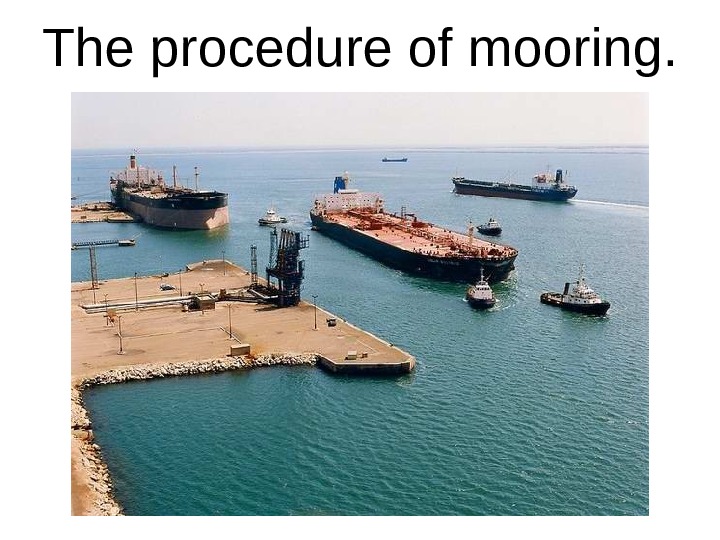
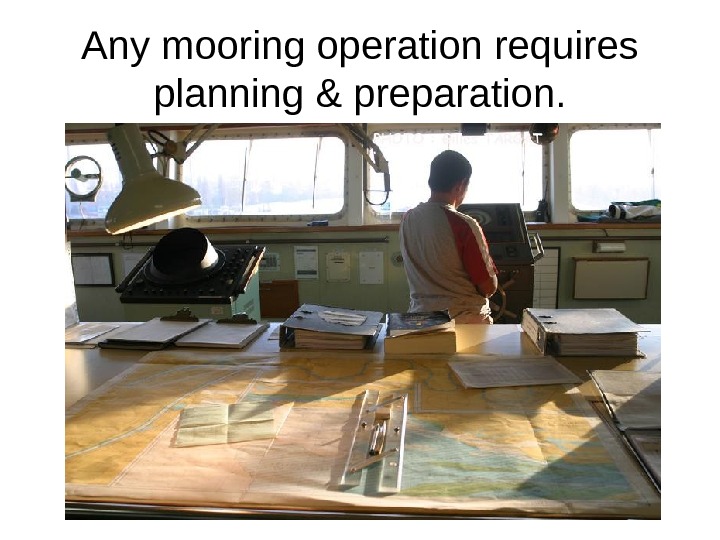












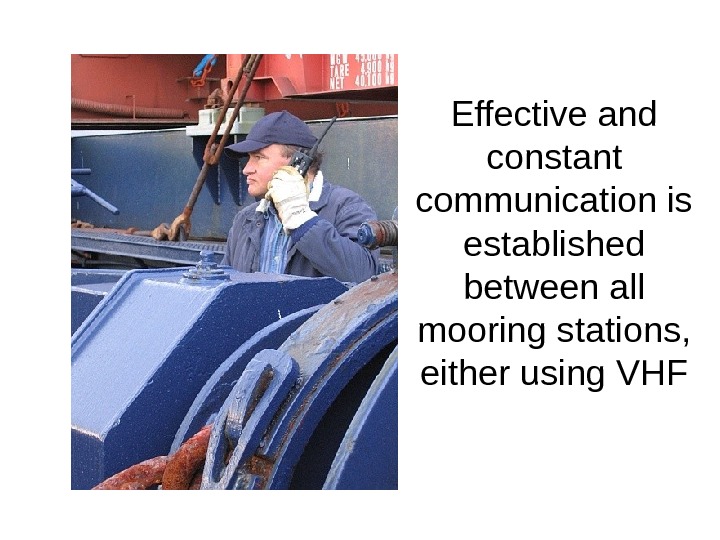

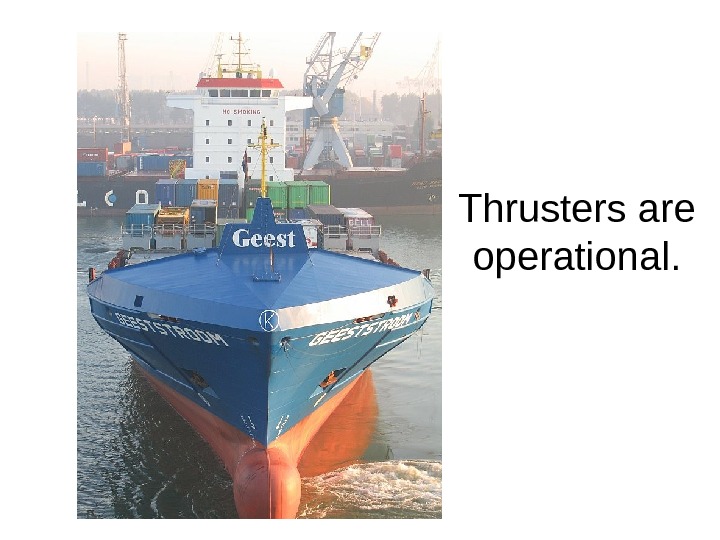



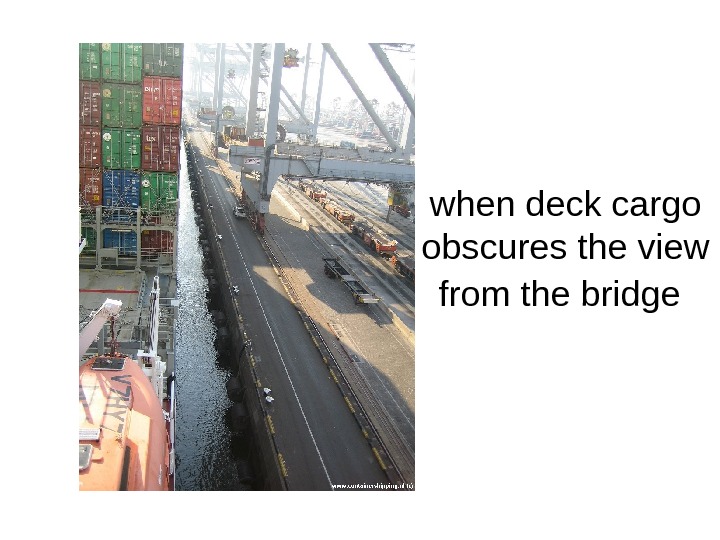
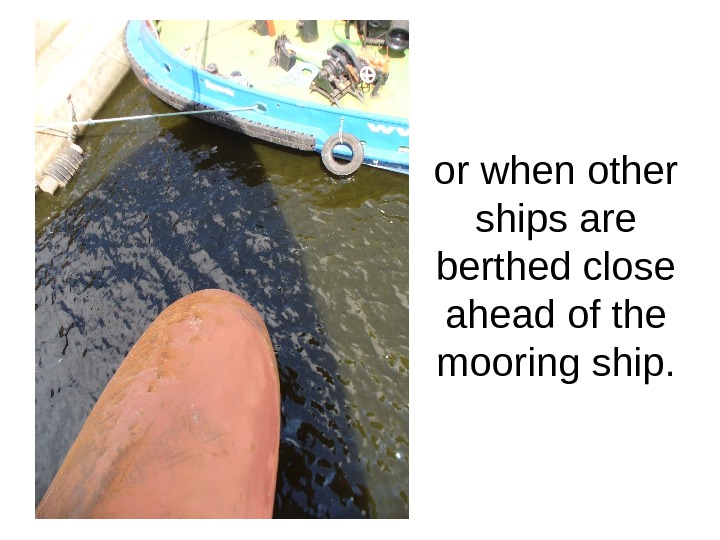


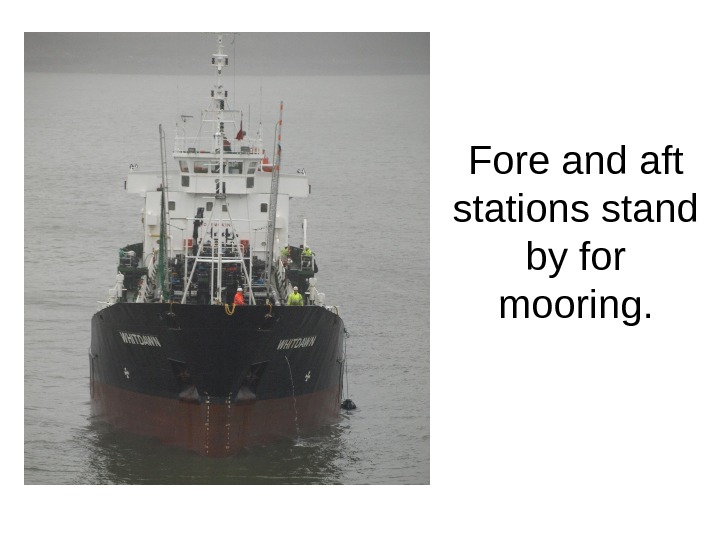
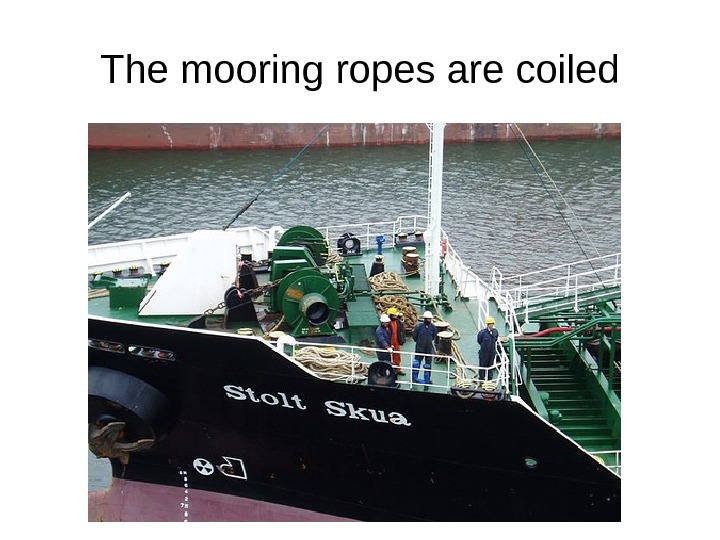
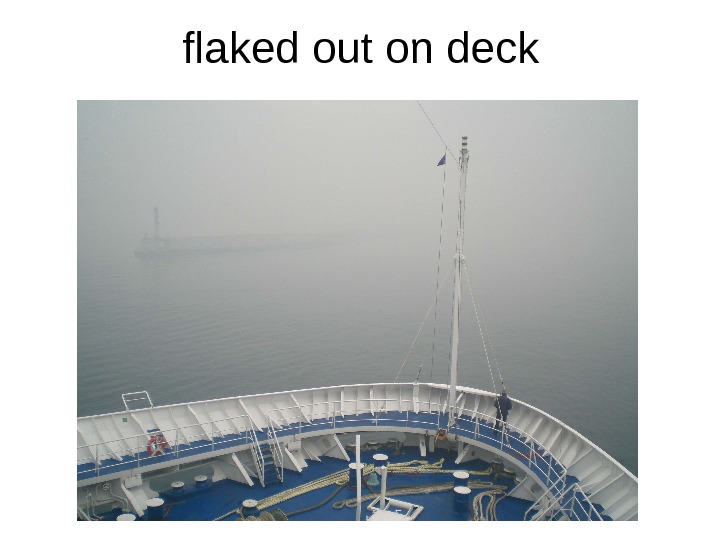
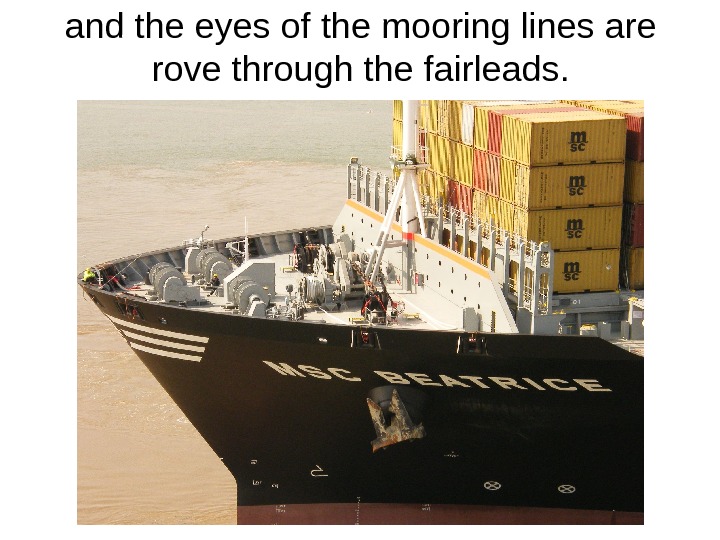
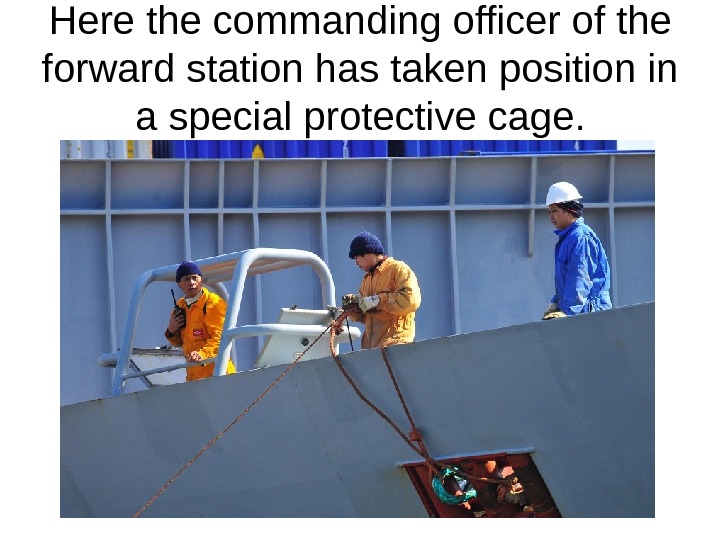


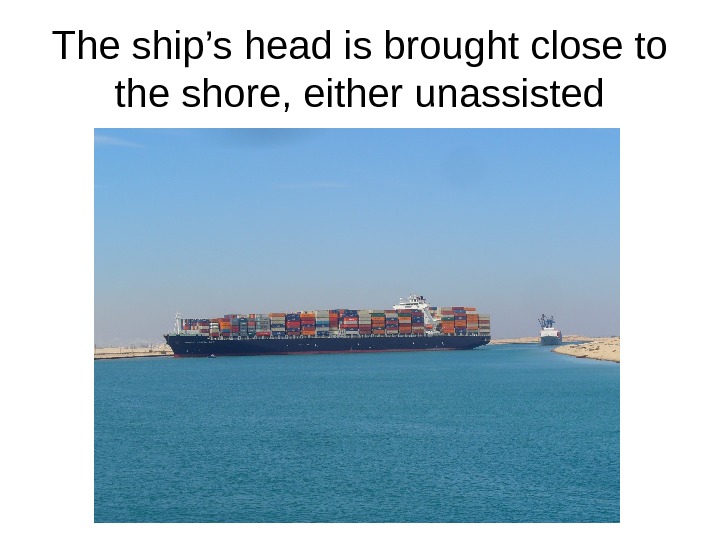



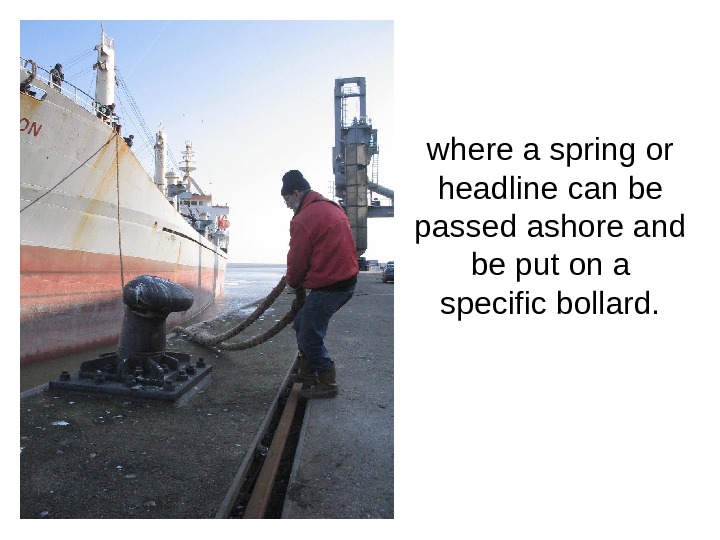

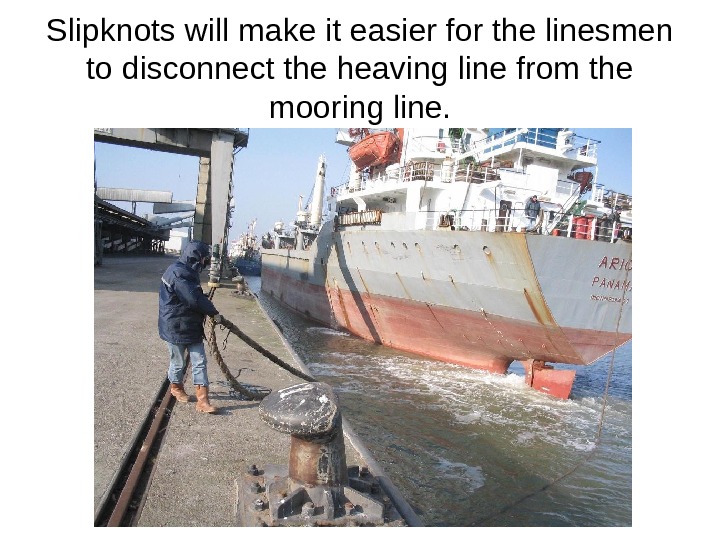





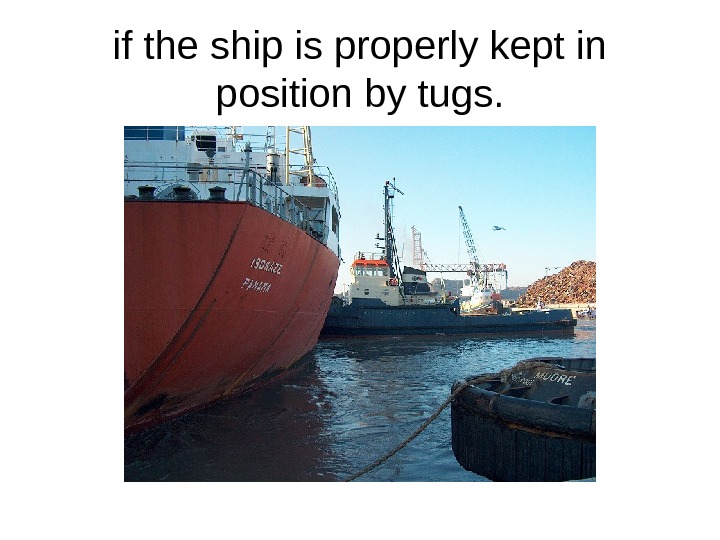
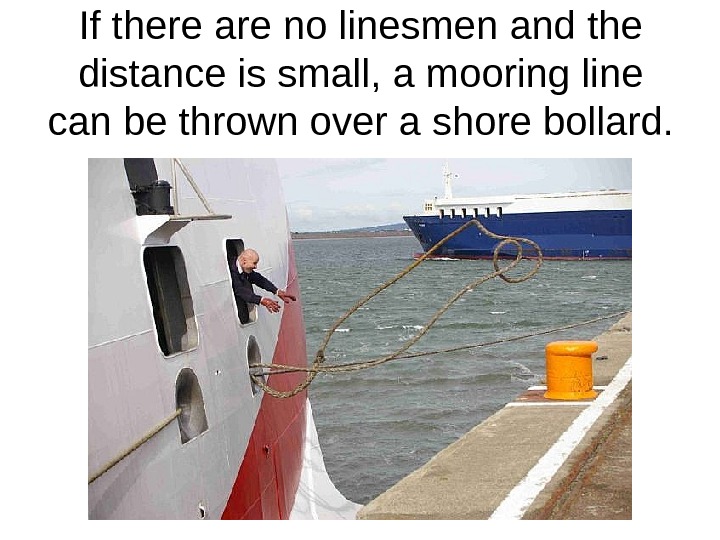
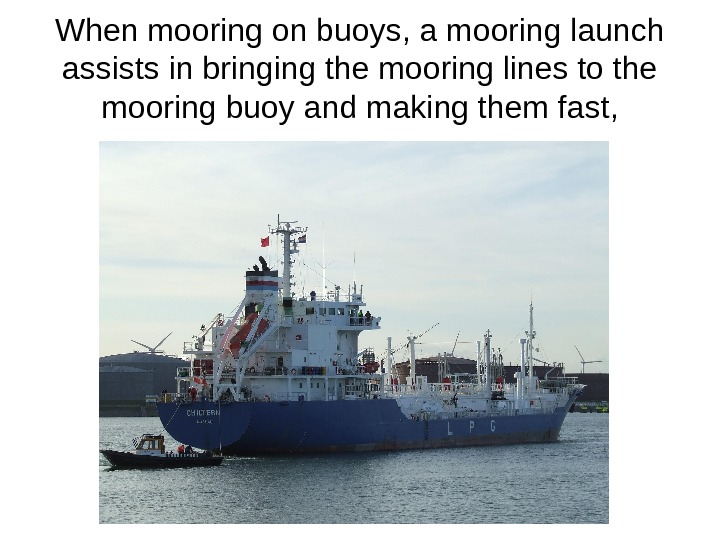

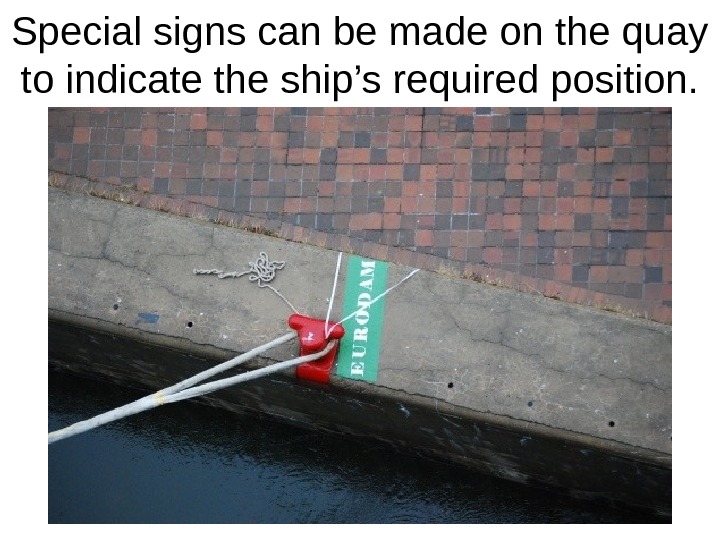

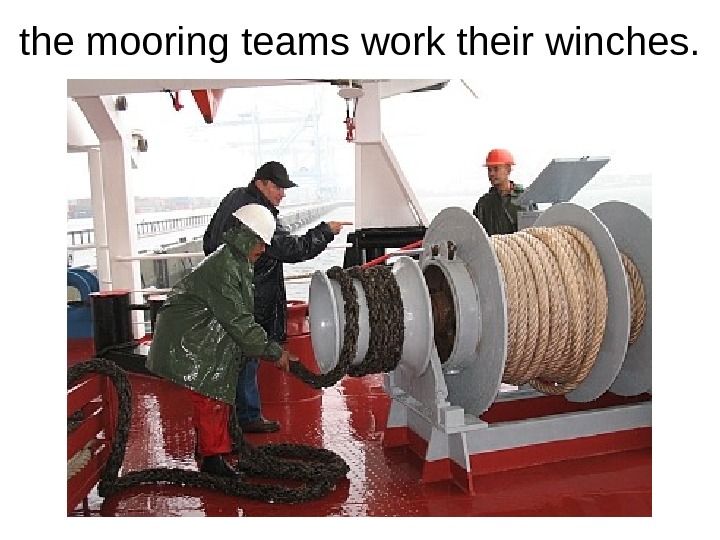

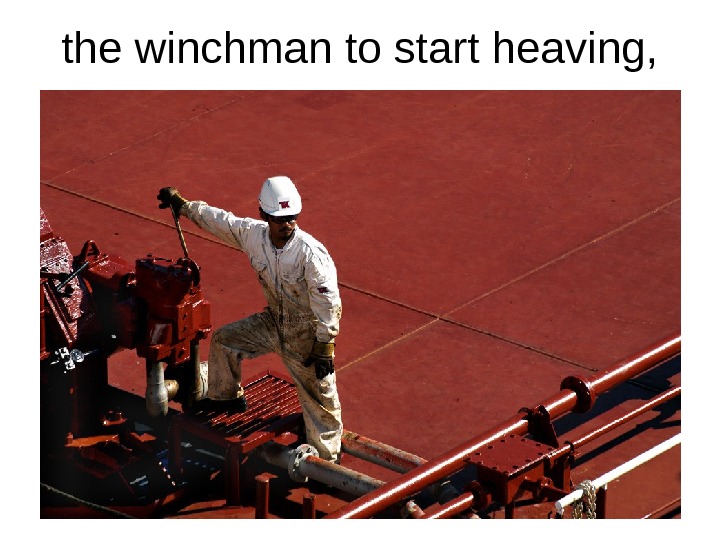

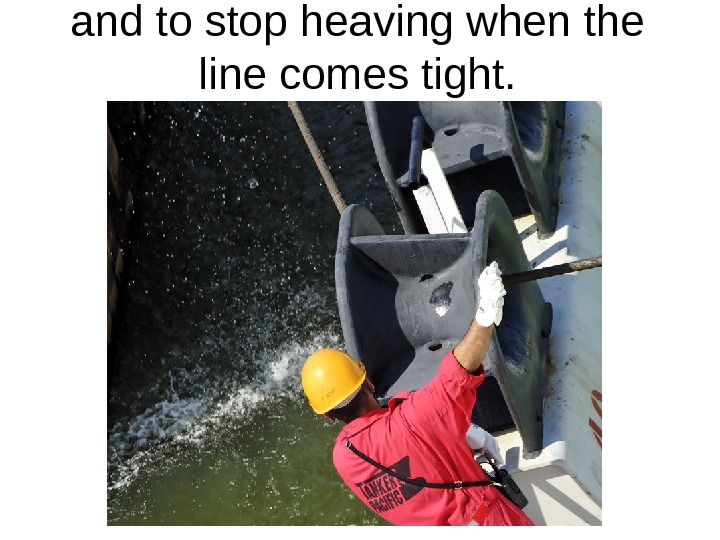
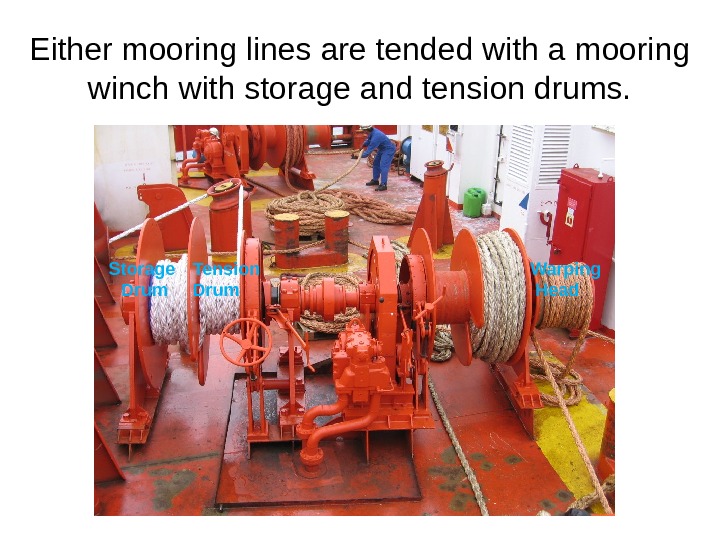




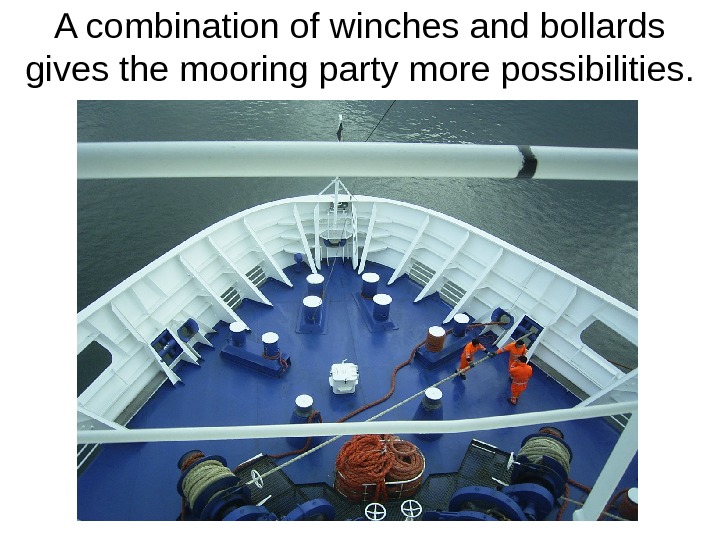

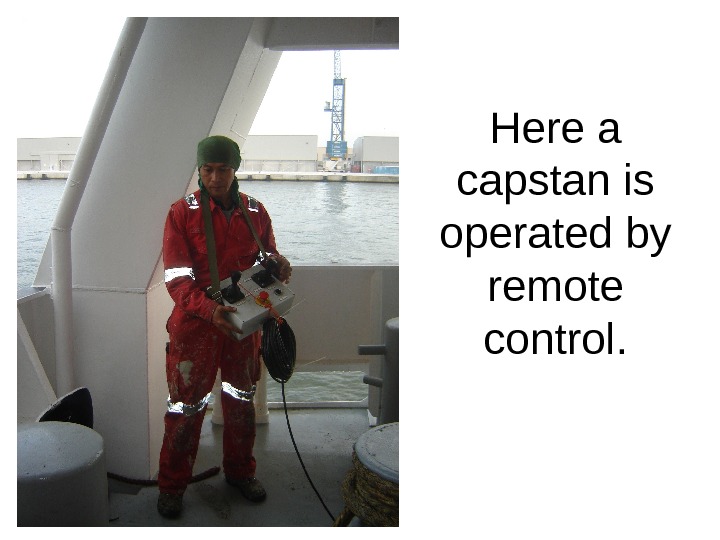

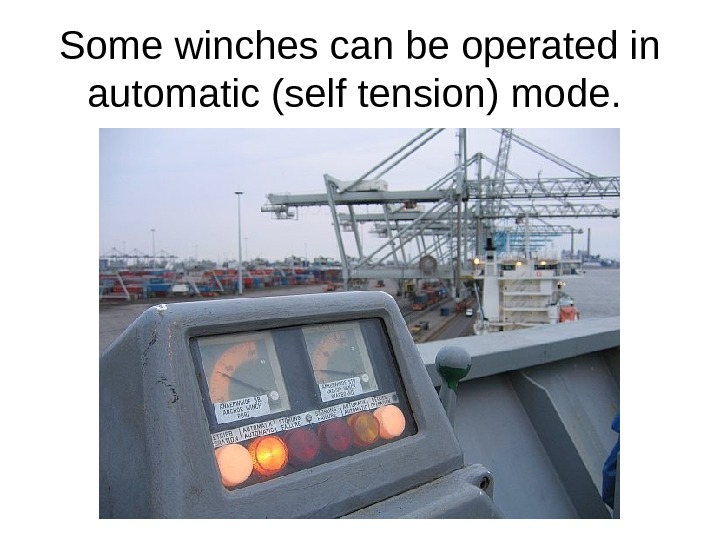
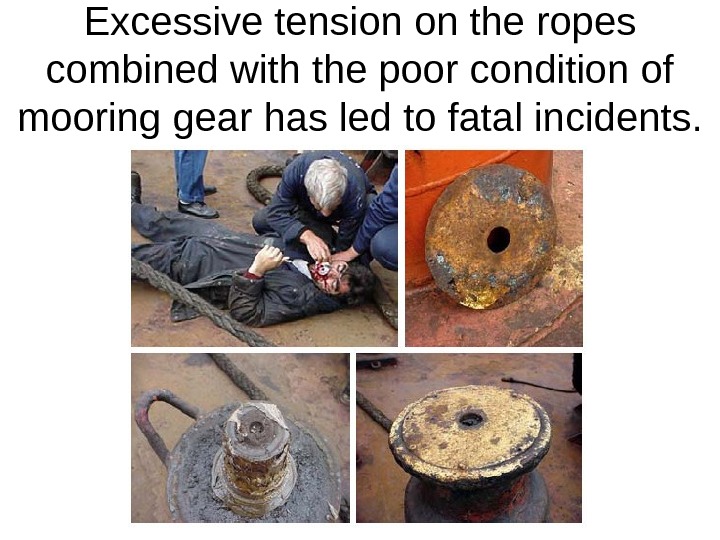
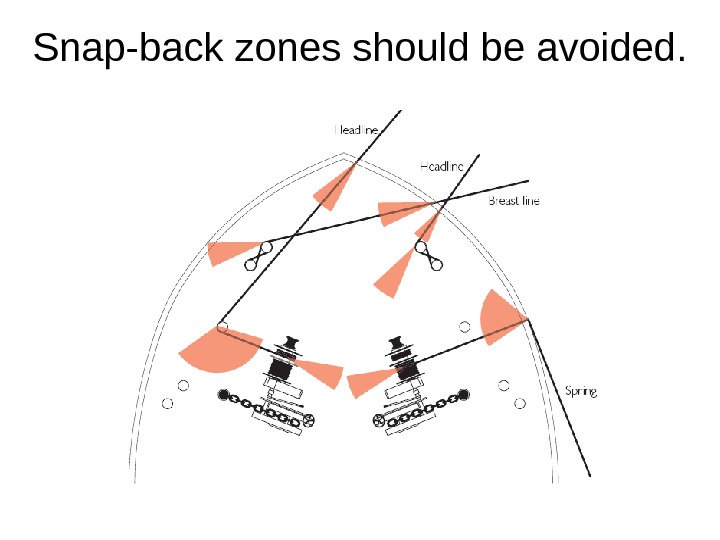
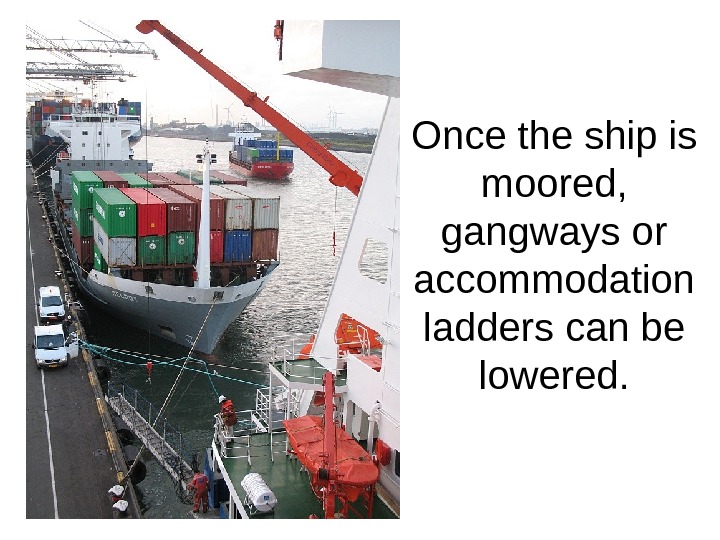
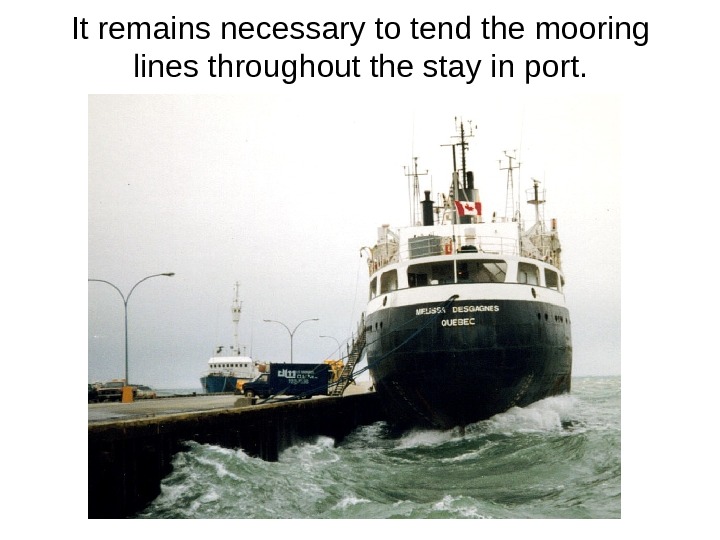
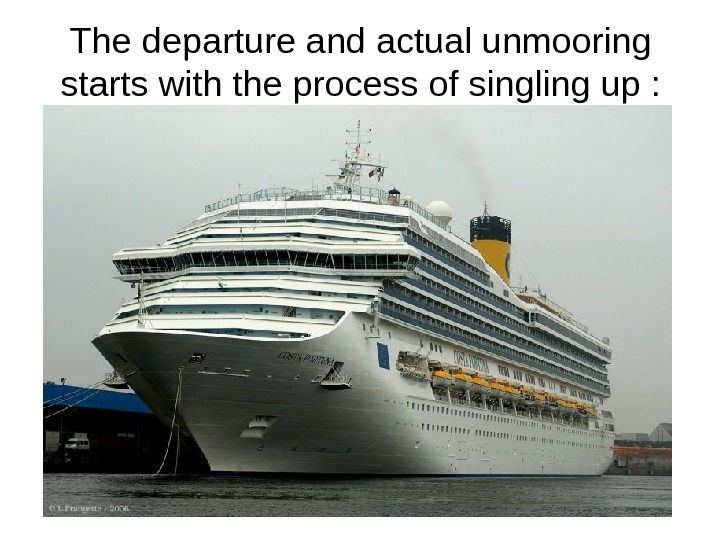
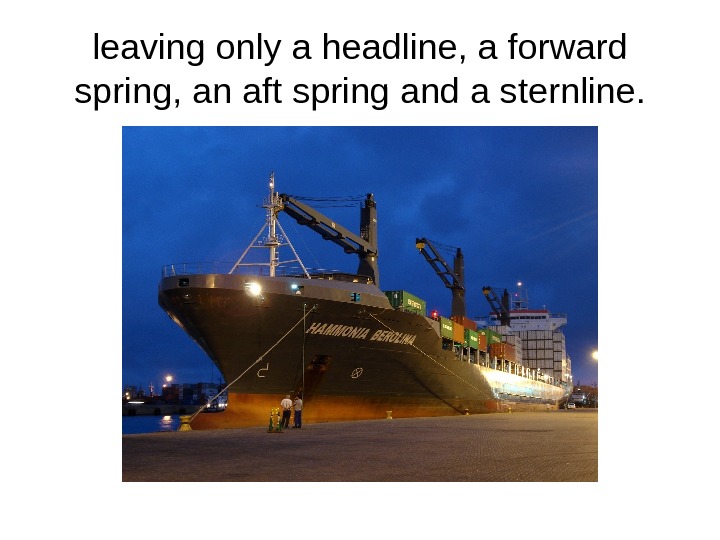



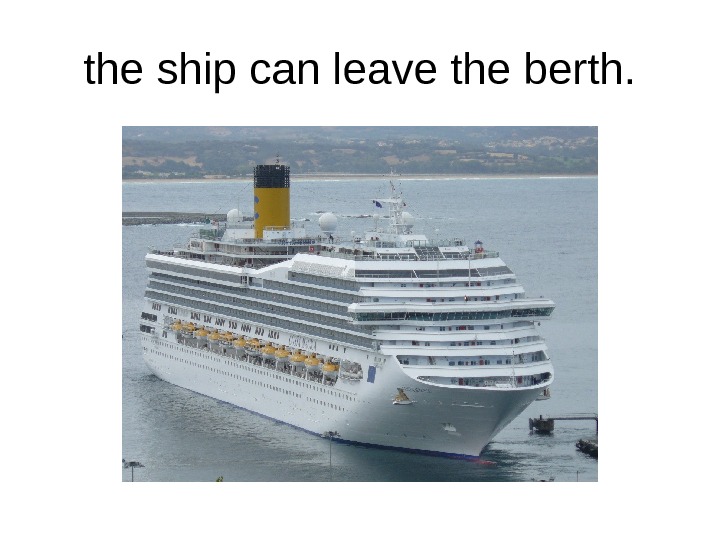
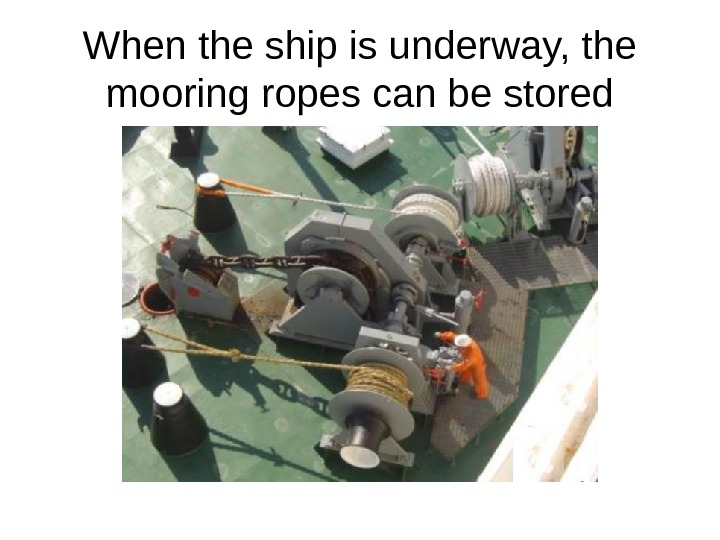
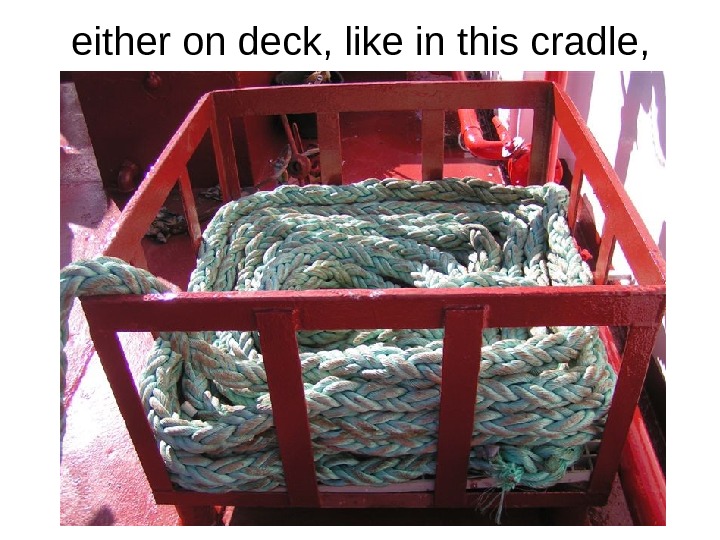
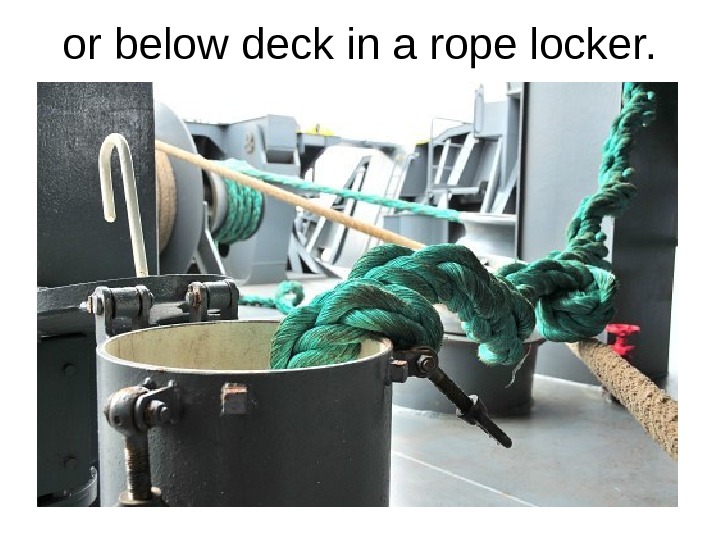
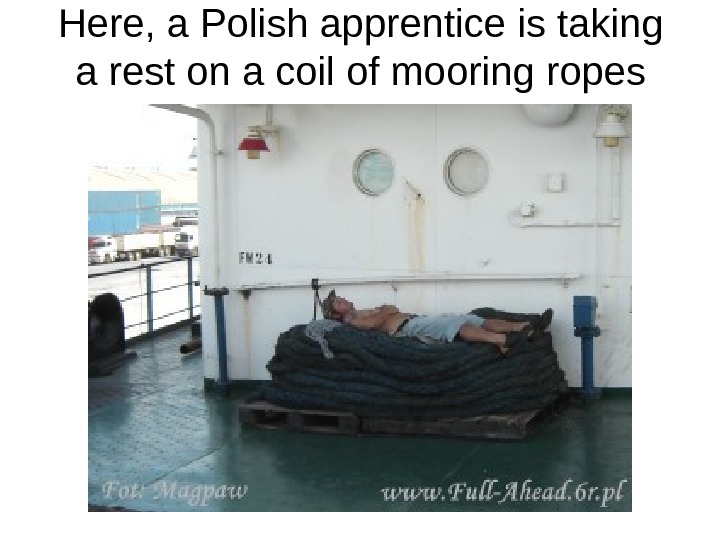

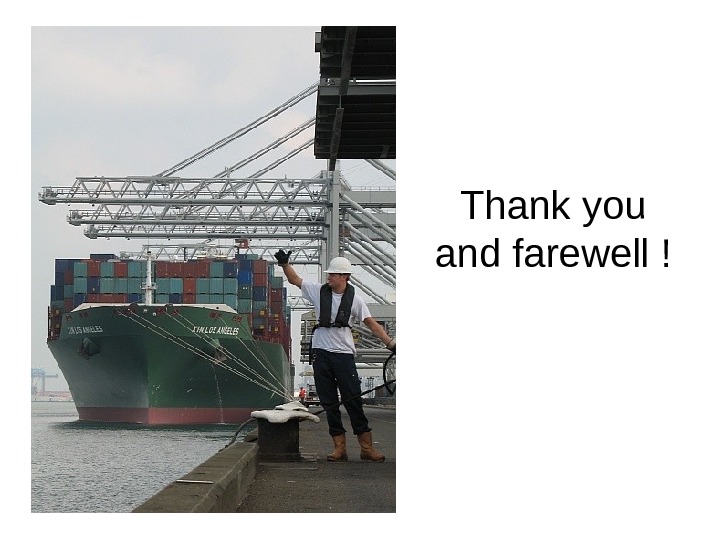
- Размер: 18.9 Mегабайта
- Количество слайдов: 80
Описание презентации The procedure of mooring. Any mooring operation по слайдам
 The procedure of mooring.
The procedure of mooring.
 Any mooring operation requires planning & preparation.
Any mooring operation requires planning & preparation.
 A mooring plan shows the position of the mooring lines to be used.
A mooring plan shows the position of the mooring lines to be used.
 A minimum of four stations are involved in mooring operations : the bridge,
A minimum of four stations are involved in mooring operations : the bridge,
 the engine room,
the engine room,
 forward station
forward station
 and aft station.
and aft station.
 On large ships, there can be an additional mooring station amidships.
On large ships, there can be an additional mooring station amidships.
 When the deck parties are ordered “stand-by for mooring”, they prepare mooring lines,
When the deck parties are ordered “stand-by for mooring”, they prepare mooring lines,
 heaving lines,
heaving lines,
 anchors,
anchors,
 and fenders.
and fenders.
 In the engine-room, more generators are put on the board to feed crucial units, like thrusters and winches.
In the engine-room, more generators are put on the board to feed crucial units, like thrusters and winches.
 On the bridge, the bridgewing console is prepared.
On the bridge, the bridgewing console is prepared.
 Effective and constant communication is established between all mooring stations, either using VH
Effective and constant communication is established between all mooring stations, either using VH
 or a talk-back system. Push Button. Megaphone Microphone
or a talk-back system. Push Button. Megaphone Microphone
 Thrusters are operational.
Thrusters are operational.
 When approaching the berth, the ship’s headway is run off.
When approaching the berth, the ship’s headway is run off.
 Officers are posted on special positions to inform the bridge station about the actual distances to the quay,
Officers are posted on special positions to inform the bridge station about the actual distances to the quay,
 especially, when berthing head to or stern to,
especially, when berthing head to or stern to,
 when deck cargo obscures the view from the bridge
when deck cargo obscures the view from the bridge
 or when other ships are berthed close ahead of the mooring ship.
or when other ships are berthed close ahead of the mooring ship.
 The use of CCTV can provide the bridge station with such information.
The use of CCTV can provide the bridge station with such information.
 During dark hours, searchlights are used to obtain a better view.
During dark hours, searchlights are used to obtain a better view.
 Fore and aft stations stand by for mooring.
Fore and aft stations stand by for mooring.
 The mooring ropes are coiled
The mooring ropes are coiled
 flaked out on deck
flaked out on deck
 and the eyes of the mooring lines are rove through the fairleads.
and the eyes of the mooring lines are rove through the fairleads.
 Here the commanding officer of the forward station has taken position in a special protective cage.
Here the commanding officer of the forward station has taken position in a special protective cage.
 The master and the pilot discuss how to position the ship.
The master and the pilot discuss how to position the ship.
 In rare cases, when shore assistance is unavailable, a deckhand jumps ashore.
In rare cases, when shore assistance is unavailable, a deckhand jumps ashore.
 The ship’s head is brought close to the shore, either unassisted
The ship’s head is brought close to the shore, either unassisted
 or with tug assistance.
or with tug assistance.
 When close enough to the quay, a heaving line is thrown out.
When close enough to the quay, a heaving line is thrown out.
 The ship slowly proceeds to her berth,
The ship slowly proceeds to her berth,
 where a spring or headline can be passed ashore and be put on a specific bollard.
where a spring or headline can be passed ashore and be put on a specific bollard.
 When throwing heaving lines and sending mooring lines ashore, the aft station should prevent fouling the ship’s propeller.
When throwing heaving lines and sending mooring lines ashore, the aft station should prevent fouling the ship’s propeller.
 Slipknots will make it easier for the linesmen to disconnect the heaving line from the mooring line.
Slipknots will make it easier for the linesmen to disconnect the heaving line from the mooring line.
 When the distance to the quay is significant, mooring lines are lowered
When the distance to the quay is significant, mooring lines are lowered
 And passed to a mooring man on board a mooring boat or launch.
And passed to a mooring man on board a mooring boat or launch.
 The mooring launch brings the mooring lines ashore,
The mooring launch brings the mooring lines ashore,
 where linesmen or linehandlers put the eyes of the mooring lines on shore bollards.
where linesmen or linehandlers put the eyes of the mooring lines on shore bollards.
 Mooring lines on both ends can be given at once,
Mooring lines on both ends can be given at once,
 if the ship is properly kept in position by tugs.
if the ship is properly kept in position by tugs.
 If there are no linesmen and the distance is small, a mooring line can be thrown over a shore bollard.
If there are no linesmen and the distance is small, a mooring line can be thrown over a shore bollard.
 When mooring on buoys, a mooring launch assists in bringing the mooring lines to the mooring buoy and making them fast,
When mooring on buoys, a mooring launch assists in bringing the mooring lines to the mooring buoy and making them fast,
 When using a slip wire, the eye, that is to be belayed on board, is seized with a rope of a smaller diameter.
When using a slip wire, the eye, that is to be belayed on board, is seized with a rope of a smaller diameter.
 Special signs can be made on the quay to indicate the ship’s required position.
Special signs can be made on the quay to indicate the ship’s required position.
 When the ship is in position,
When the ship is in position,
 the mooring teams work their winches.
the mooring teams work their winches.
 The commanding officer shows
The commanding officer shows
 the winchman to start heaving,
the winchman to start heaving,
 to heave a little bit more,
to heave a little bit more,
 and to stop heaving when the line comes tight.
and to stop heaving when the line comes tight.
 Either mooring lines are tended with a mooring winch with storage and tension drums. Tension Drum. Storage Drum Warping Head
Either mooring lines are tended with a mooring winch with storage and tension drums. Tension Drum. Storage Drum Warping Head
 or the mooring line is heaved in with the warping drum on a winch,
or the mooring line is heaved in with the warping drum on a winch,
 stoppered,
stoppered,
 and belayed to a bollard
and belayed to a bollard
 or bitts (two bollards).
or bitts (two bollards).
 A combination of winches and bollards gives the mooring party more possibilities.
A combination of winches and bollards gives the mooring party more possibilities.
 Operating mooring winches usually requires a minimum of 2 men.
Operating mooring winches usually requires a minimum of 2 men.
 Here a capstan is operated by remote control.
Here a capstan is operated by remote control.
 As a rule, controls of winches include emergency stop pushbuttons.
As a rule, controls of winches include emergency stop pushbuttons.
 Some winches can be operated in automatic (self tension) mode.
Some winches can be operated in automatic (self tension) mode.
 Excessive tension on the ropes combined with the poor condition of mooring gear has led to fatal incidents.
Excessive tension on the ropes combined with the poor condition of mooring gear has led to fatal incidents.
 Snap-back zones should be avoided.
Snap-back zones should be avoided.
 Once the ship is moored, gangways or accommodation ladders can be lowered.
Once the ship is moored, gangways or accommodation ladders can be lowered.
 It remains necessary to tend the mooring lines throughout the stay in port.
It remains necessary to tend the mooring lines throughout the stay in port.
 The departure and actual unmooring starts with the process of singling up :
The departure and actual unmooring starts with the process of singling up :
 leaving only a headline, a forward spring, an aft spring and a sternline.
leaving only a headline, a forward spring, an aft spring and a sternline.
 When tugs are in full control, all lines can be let go at once.
When tugs are in full control, all lines can be let go at once.
 When unassisted, a slip rope can be kept in order to assist the manoeuvring and let go when the ship is well clear.
When unassisted, a slip rope can be kept in order to assist the manoeuvring and let go when the ship is well clear.
 When all ropes are on deck,
When all ropes are on deck,
 the ship can leave the berth.
the ship can leave the berth.
 When the ship is underway, the mooring ropes can be stored
When the ship is underway, the mooring ropes can be stored
 either on deck, like in this cradle,
either on deck, like in this cradle,
 or below deck in a rope locker.
or below deck in a rope locker.
 Here, a Polish apprentice is taking a rest on a coil of mooring ropes
Here, a Polish apprentice is taking a rest on a coil of mooring ropes
 Winches are to be checked and greased.
Winches are to be checked and greased.
 Thank you and farewell !
Thank you and farewell !

